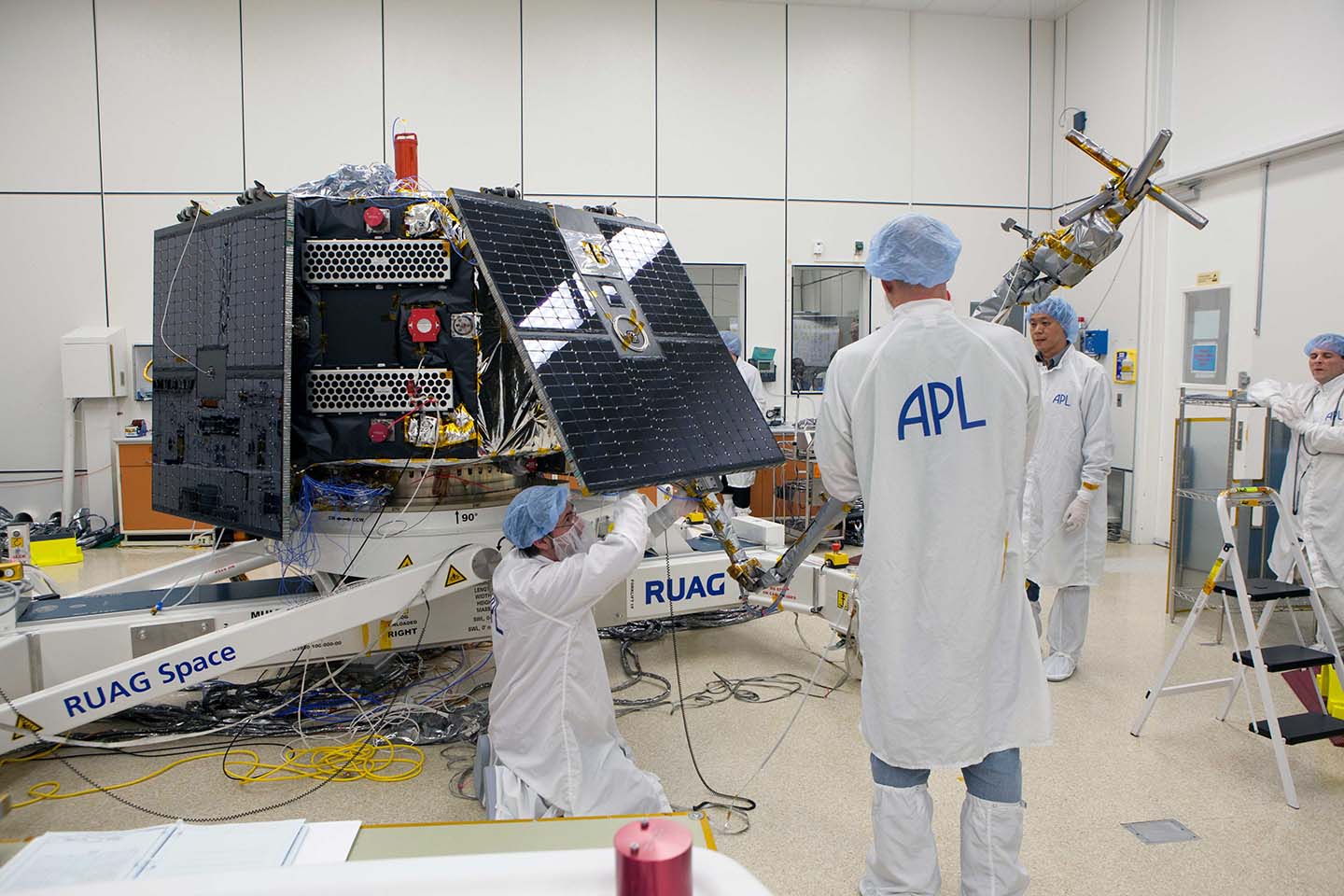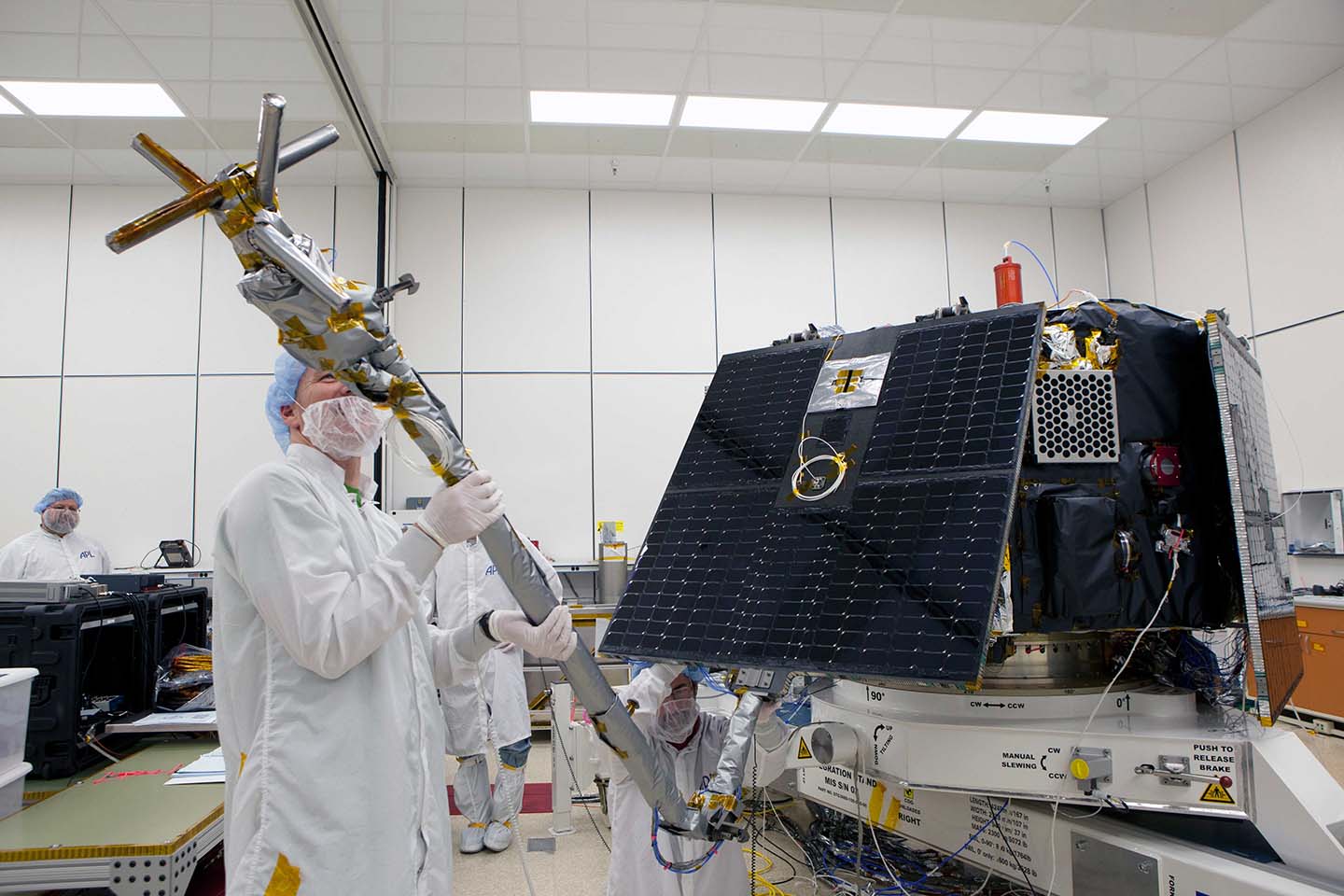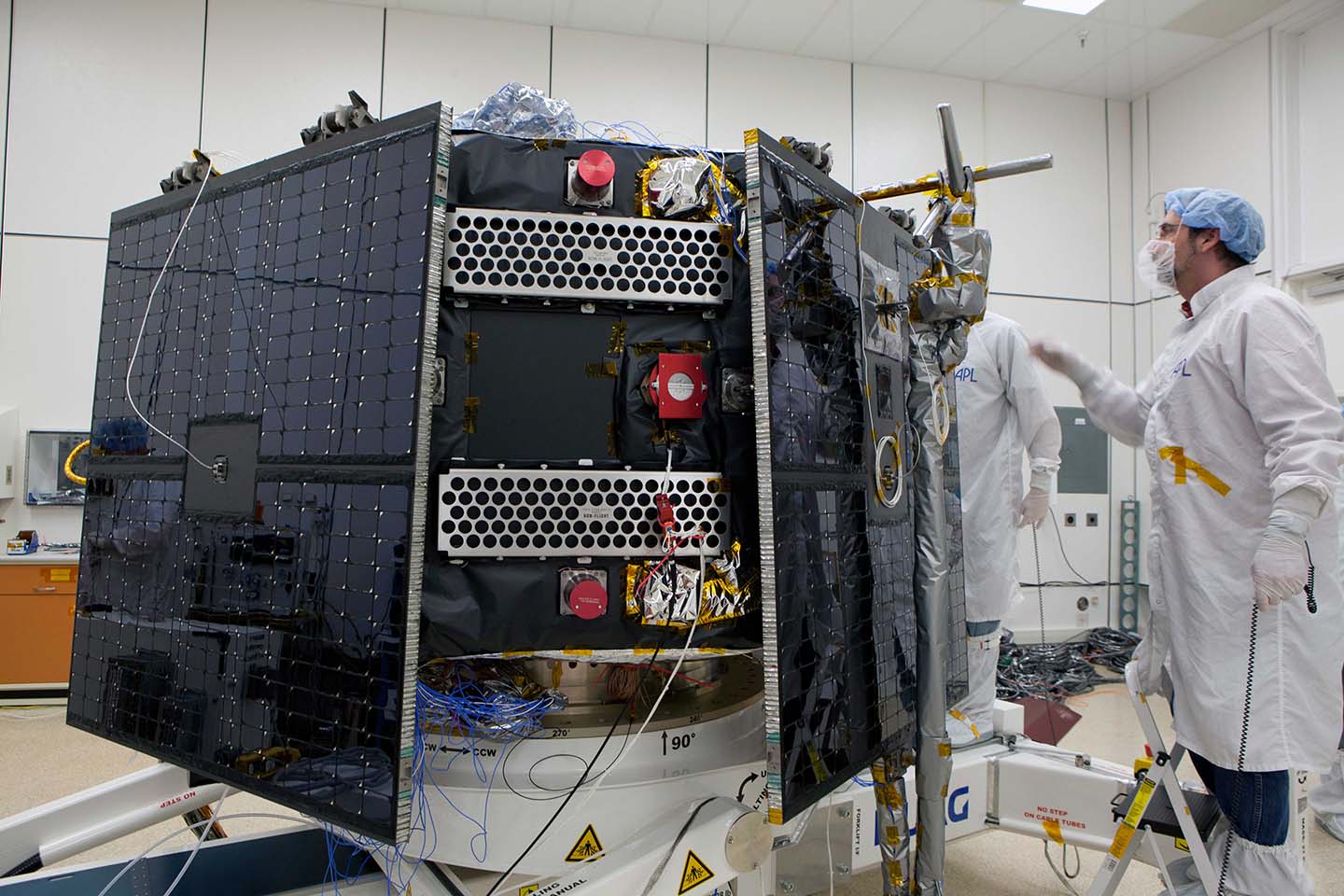Press Release
NASA’s Radiation Belt Storm Probes Ready for Space Environment Tests
Twin Spacecraft Will Explore Sun’s Influence on Earth
Mon, 12/05/2011 - 12:35
NASA’s Radiation Belt Storm Probes (RBSP), twin spacecraft being built and tested at the Johns Hopkins University Applied Physics Laboratory in Laurel, Md., are about to enter a challenging series of tests designed to certify that they are ready for their August 2012 launch and two-year mission in Earth’s orbit. The coordinated measurements of the two RBSP spacecraft will advance our understanding of space weather and the sun’s influence on the Earth and near-Earth space by probing the planet’s radiation belts, which affect space weather and spacecraft operations.
Beginning the first week of December, RBSP will embark on a space environment test campaign that will last into March 2012. The RBSP team will subject the spacecraft to physical simulations of the stresses of launch and harshness of space operations, but in a controlled test facility where engineers can monitor the spacecrafts’ condition.
“These are complex spacecraft, each with five very sensitive scientific instruments on board,” says Jim Stratton, mission systems engineer for RBSP at the Applied Physics Lab. “The environmental tests are designed to really subject the spacecraft and systems to realistic, challenging conditions and make sure they are ready to fly.”


